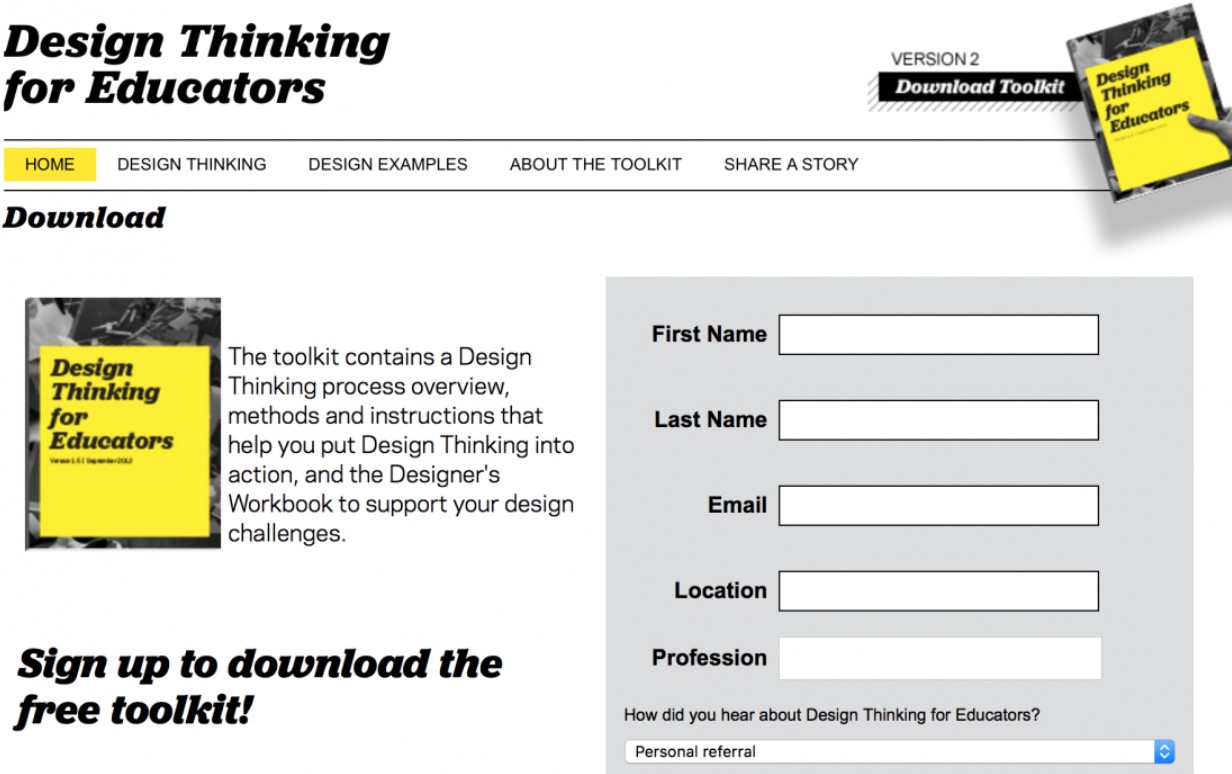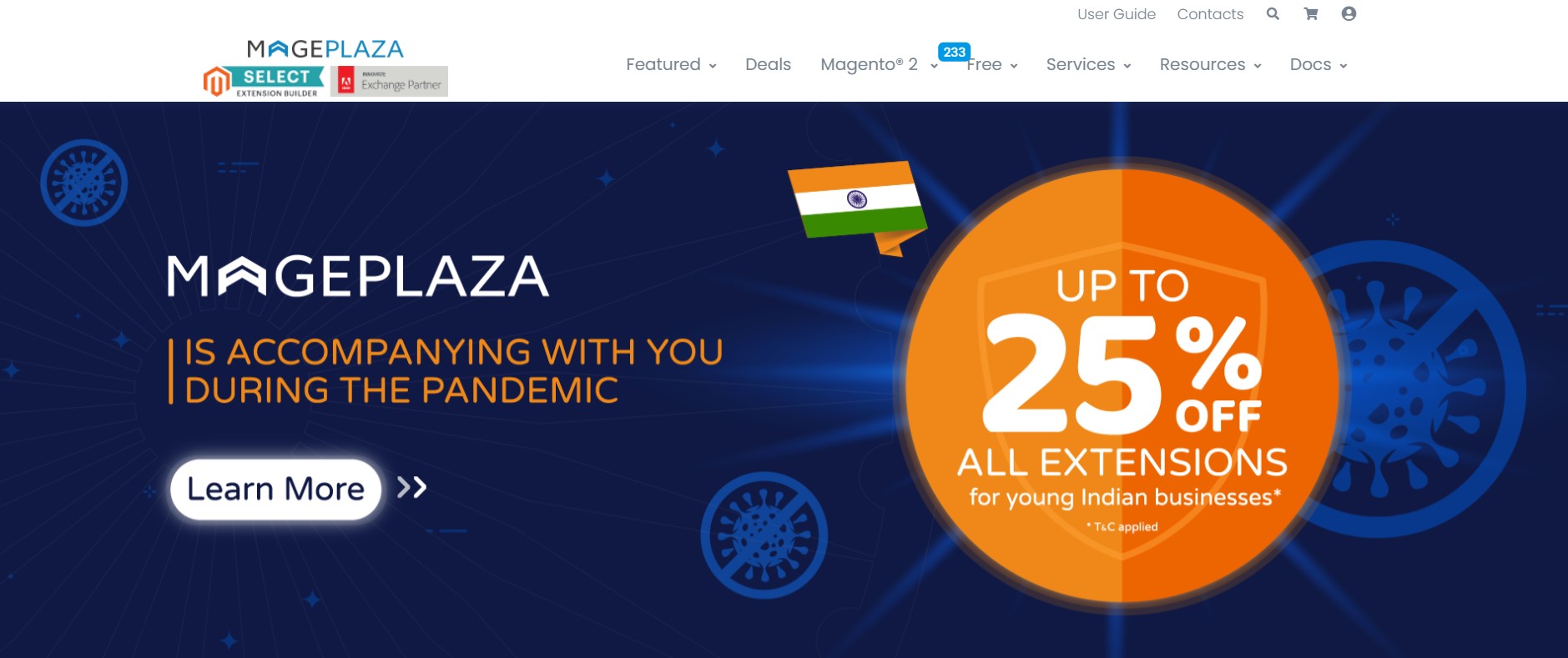How to Create a Lead Magnet in 6 Simple Steps
If you’re looking to convert your website visitors into paying customers, it all starts with an irresistible lead magnet.
Even if you have never heard the term “lead magnet” before, there is a good chance that you are already familiar with them, and you’ve likely even downloaded one yourself at some point.
So, what is a lead magnet? And how can you create one for yourself?
This blog post can help you find answers. Let’s explore!
What is a lead magnet?
A lead magnet is often an offer, such as a content piece, free consultation, or other experience valuable enough that you can exchange for a prospect’s contact information - often an email address.

A lead magnet can also be called an irresistible offer, freebie, freemium, bonus download, opt-in incentive, sign-up incentive, compelling bribe, and so on. Regardless of what you call it, the ultimate goal of a lead magnet is to maximize the number of targeted leads you’re getting for an offer.
Why do you need a lead magnet?
To be honest, consumers are more reluctant than ever to share their personal information. As a savvy marketer, it’s your job to give customers a compelling reason to share their name and email address with you.
A simple CTA (call to action) button - “Click here to sign up for our newsletter” - may not be appealing enough to persuade your prospective leads. Nevertheless, inviting customers to sign up for your newsletter in exchange for a discount on their next purchase is much more attractive. Not only can you earn a sales lead, but the customer is also more likely to purchase with their new code in hand.
This is the power of lead magnets working hard for your business!
6 steps to create a lead magnet
In this section, we’ll show you 6 simple steps to create a compelling lead magnet. Let’s explore!
Step 1. Define your buyer persona
The biggest mistake that many marketers make with their lead magnets is trying to attract a lot of people. You’ll want to do the exact opposite.
Remember that your lead magnet needs to be ultra-specific to the one you want it to attract. If your lead magnet is not relevant to the wants and needs of your buyer persona, they won’t want to exchange anything.
When you’re clear on the type of person you’d like to attract, all of your marketing becomes much easier. And, you can generate lead magnets that are tailored exactly to them.
To make it easy to define your buyer personas, get as much charity as you possibly can about them. Questions you can answer include:
- What are their demographics (age, gender, location, education, income, family size, and so on)?
- What problems are they suffering from right now?
- How can you solve their suffering?
Once you’ve had this clarity, you can create lead magnets that are hyper-relevant to your core audience and get them on your list.
Most businesses have multiple buyer personas, but each magnet should actually target one of them. Don’t worry about choosing which buyer personas is the perfect one to start with - eventually, you should create lead magnets for ALL of them. Therefore, pick the one you can provide the most value to right now and move on to the next step.
Step 2. Identify your value proposition

Once you have decided which prospects you want to target, you need to give them a compelling reason to download your lead magnet.
When identifying your value proposition, consider your buyer personas and their pain points; a great lead magnet should solve their problems. Instead of creating something you think they could want, figure out what they really need and deliver that.
In this case, bigger isn’t better. Don’t try to offer a massive ebook or create a lengthy email course. The quicker you can give them results, the better.
Step 3. Choose a name for your lead magnet
Now that you know what you are offering and to whom, it’s essential to give your lead magnet a name. Similar to crafting an eye-catching headline for your marketing email or blog post, your lead magnet title is bound to make a drastic difference in its conversion rate.
Below are some short guidelines for coming up with a compelling name for your lead magnet:
-
Make it clear. When visitors read the name of your resource, they should instantly know what it is about. Clear names often perform better than fancy ones, especially in case not many people know your brand yet.
-
Keep it simple. In fact, you should be able to say the name of your lead magnet in one breath of air. If your lead magnet name is confusing, people will easily forget it.
-
Make it sticky. If you’d like to go the extra mile, make your name sticky and memorable. This means someone should only hear the name of your lead magnet once in order to remember it for years.
Step 4. Create your lead magnet
Actually, there are several types of lead magnets that you can offer. We’ll mention some common types of lead magnets in the very next section.
So, when creating, make sure that your lead magnet:
-
Be instantly accessible. Your lead magnet can work best if it is something that can be delivered right away. Remember that people love instant gratification.
-
Solves a real problem. If your lead magnet can’t solve a real problem that your customer is facing, or if it doesn’t give them something they really need, it won’t work at all.
-
Be high value. Your lead magnet should have both high-perceived value and high actual value.
-
Promises one-quick win. It should promise (and deliver) a one-quick win for your visitors. In other words, it should help them easily achieve something.
-
Be super-specific. Don’t generate a lead magnet about something general. The more specific you’re about the benefit of your lead magnet, the better it’ll convert leads.
-
Be quick to digest. Some types of lead magnets tend to convert very well because they’re so quick and easy to digest (i.e., PDF checklists). Meanwhile, ebooks or reports may make your prospects feel overwhelmed.
-
Demonstrates your expertise or UVP (unique value proposition). When visitors consume your lead magnet, it should show your expertise or unique value proposition. This eventually helps turn leads into customers down the road.
Step 5. Provide top-notch content

Your lead magnet needs to be greatly useful to your visitors.
If your visitors can’t find any value in your lead magnet, they won’t develop a positive image of your brand. When your brand image suffers, so does your business.
Keep the following points in mind:
- Don’t provide obsolete content resources
- Deliver the exact resource that your promise on your lead-gen form
- Offer highly relevant content to your typical website visitor
- Make your content resources easily understandable
Step 6. A/B test your lead magnets
A/B testing plays an essential role in determining whether a lead magnet is working for you or not.
Even when a lead magnet is driving a significant number of leads to you, you can’t be sure if that is the best you can achieve. Some A/B testing ideas you can take advantage of include:
-
A/B test in-content lead magnets with a pop-up lead magnet or a sidebar lead magnet
-
Test to see whether a glimpse (gist) of lead magnet on a form helps you boost conversions in comparison to a form with just an image of the lead magnet. Find out what drives the conversions (the offering or the form design)
-
Test to find whether a package of content works as a better lead magnet than a standalone content resource
-
Test different types of lead magnets given in the next part
Apart from these ideas, you can also A/B test the design, placement, as well as usability of your lead magnet forms.
7 common types of lead magnets you can offer
1. Guide/ Report
This is the most common and straightforward type you can offer. Guides and reports provide your visitors with in-depth information about the programs you offer, or which steps are necessary to become involved. However, don’t overwhelm your prospects with information.
Besides, the key with all lead magnets, especially guides and reports, is specificity! You should focus on one particular goal for one specific buyer persona.
Take a closer look at the example below:

MuleSoft has made it clear who they are targeting - SaaS executives, as well as the solution they’re offering - how to make your app “enterprise-ready.”
The specificity of this one and the sales copy on the landing page ensure the only people interested in downloading this guide are potential customers for MuleSoft.
2. Cheat sheet/ Handout
Cheat sheets and handouts can work well because they provide highly-tactical information that saves the prospect a lot of time. Although they’re often delivered in PDF format, cheat sheets take a different approach than reports and guides.
Cheat sheets are typically only one page or two long, and they get straight to the point. You can see these presented as checklists, blueprints, and mind maps.

In the above cheat sheet, you’ll get 52 headline hacks for writing blog posts that go viral. This is a compelling offer as it has high-perceived value, speaks to a specific desire, and is relevant to bloggers.
So, when writing your own cheat sheet, remember some helpful tips:
- Make sure the content is something needed
- It should simplify a procedure that contains repetitive steps so that it can be used over and over again
- Use images or mind maps to display the steps involved where applicable
- Give fill-in-the-blank style templates or content whenever possible
3. Toolkit/ Resource list
Toolkits and resource lists can make great lead magnets for the right buyer persona. This offers one piece of reference material for them to use many times, without tracking down all of those tools or resources by themselves.
For instance, Design Thinking for Educators offers this free toolkit, which is basically a list of different tools their leads can use to put design thinking into action.

This type is perfect for your brand if you already have tools and resources available that you want to ensure your leads are aware of.
4. Video training/ Webinar

There must be a reason why 87% of online marketers use videos. Videos can draw the eye quickly, and are incredibly easy to use. If you are comfortable in front of the camera and have a skill you can teach, this could be an excellent lead magnet to offer.
Instead of live webinars, you can send your leads to a private page with a recorded video, or send them a recording of your previous webinar. Aside from specificity, the key here is providing valuable information that your lead can actually use.
You might feel interested in: Video Email Marketing Guide
5. Software download/ Free trial
Software companies often engage users by offering a limited freebie version of their product. You could do the same thing by offering a brief version of whatever course material, based on the prospect’s interest.
This type can work very well because people love to try before they buy. Here is an example of a free trial offer that is designed to covert.

Did you notice the “No credit card required” in the copy on the above form? This is incredibly efficient for lowering the barrier to entry because visitors don’t need to worry about canceling their free trial period to avoid getting charged.
6. Discount/ Free shipping
People generally love discounts and getting things for free. And for many people, giving away their email addresses is just a small price to pay if they can potentially save hundreds or even thousands of dollars on a purchase.
This type works best for companies selling physical products or anything where you can get a lot of repeat purchases from customers. The following example is from Mageplaza, which is well-known for hooking up their customers with amazing deals.

Keep in mind that if your products/ services are low-priced or the discounts aren’t significant, your lead magnet might not be as appealing to your prospects.
7. Quiz/ Survey
Creating quizzes and surveys has tremendous value in some industries. Below is a great example offered by Neutrogena.

This is not only a fun activity for their buyer persona, but they will be able to take care of their skin better and understand which products are appropriate for them. Plus, by prompting their customers to “solve” their acne (rather than alternatives like finding the right products/ skin type), they effectively touch upon a major pain point and truly strike a chord with their messaging.
To maximize your conversion rates, you can present your prospects with the opt-in form right after they’ve completed the quiz, such as asking for their email addresses so you can send the results or findings.
That way, they have already invested a little bit of time and they’ll have built anticipation for the results.
8 tools to create a lead magnet
To create a lead magnet that can attract visitors, it’s got to be impressive and done professionally. Below is a list of 8 recommended tools that help you build every aspect of your lead magnet.
Best tools for picking your lead magnet topic
-
HubSpot Blog Ideas Generator. While this tool is designed for those who write blog posts regularly and need help when they feel they’ve run out of topics, it is also an excellent source of inspiration for lead magnets. You just simply enter a noun or subject you think would appeal to your visitors, then HubSpot will give you 5 ideas for free.
-
CoSchedule Headline Analyzer. Because 80% of visitors will read the headline, but only 20% of them will take action on your content, it’s essential to use a tool like the Headline Analyzer to get it right. Not only in terms of length, but also in terms of word choice.
Best tools for designing your lead magnet
-
Canva. This is our go-to tool for a multitude of quick design projects. It is also one of the most affordable and user-friendly tools out there. With Canva, you can design simple graphics to save in multiple formats, such as .gif or .mp4. You can also set up single or multi-page documents (i.e., checklists or information downloads) and infographics from scratch or take advantage of their pre-made template designs.
-
Wistia. Whether you are looking for a tool to help you make educational video content, or an affordable option for hosting your videos off-sie, Wistia is a wise choice. Cool features of Wistia include the ability to capture visitor information right in the video and insert a CTA.
-
Piktochart. If you’d like to step up your design skills and create full-length documents (such as ebooks and white papers), Piktochart is a fantastic choice. This user-friendly tool comes chock full of professional-looking templates for infographics, reports, and presentations. You can then add your own content and personalize your template as you see fit.
Best tools for promoting your lead magnet that convert on your website
-
WishPond. This is an incredible all-in-one tool for generating landing pages, pop-ups, marketing automation, as well as running contests and promotions. Directly embed landing pages onto your website and integrate with some of today’s most common email marketing platforms to gather all your leads, so that you can nurture them into lifelong customers.
-
AVADA Marketing Automation is an awesome tool for creating and automating lead generators. The tool allows you to target the right kinds of visitors with promotional lead magnet messages and pop-ups on your website. It comes with promotional pop-up templates as well as email subscriber forms that help you convert visitors more effectively.
The bottom line
Remember, when creating a lead magnet, you’re starting a very important relationship. You’d like to begin the journey to trust-building. When your visitors feel that you have their best interest at hand, they’ll start buying from you.
Plus, when it comes to choosing the type of lead magnet, you should try them all. Vary between the different types and ensure to track and monitor your results. You may find that some can work better than others in different niches. Test, monitor, re-test, and evaluate. Let your own results drive the future decisions that you make.
We hope you can create a compelling lead magnet after reading this blog post. Contact us if you have any concerns about this topic! We’re always happy to hear from you!
New Posts







